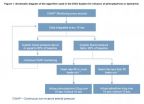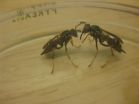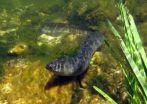(Press-News.org) Problems related to urination, including incontinence and having to get up to urinate at night-time, have become more acceptable topics of discussion over recent years. New treatment options have also led doctors to address these symptoms more actively. Despite this, no study has effectively compared the bother of each of these bladder symptoms for men and women of all ages.
The FINNO Study is an ongoing questionnaire survey conducted right across Finland. A random sample of 6,000 adults identified from the Finnish Population Register, were contacted with a questionnaire asking about all the most common urinary complaints. The researchers received a total of 3,727 replies (62.4% response rate), and slightly more than half of the respondents were female.
Across the whole population, the most common urinary symptoms which caused substantial bother were rushing to the toilet (urinary urgency, 7.9%), leaking urine with coughing or exercise (stress incontinence ,6.5%), night-time voiding (nocturia, 6.0%), dribbling after urination (post-micturition dribble, 5.8%), and leaking urine before reaching a toilet (urgency incontinence, 5.0%). Women were more likely to suffer from either kind of incontinence, while men experienced more problems with slow or incomplete urination.
However, when the researchers focused specifically on the sufferers of each symptom, they found that leaking urine before reaching a toilet was listed as the most embarrassing personal problem by both men and women.
"In women, stress incontinence is the condition whose investigation and treatment we should particularly focus on. The symptom occurs in approximately one in eight of all women at a level of severity that causes substantial bother," explains Kari Tikkinen, MD, PhD, from the Helsinki University Central Hospital and lead researcher for the FINNO Study.
"In both genders, rushing to the toilet and waking at night-time to urinate were listed as fairly common and troublesome problems – approximately one in twelve people stated they had substantial trouble with rushing to the toilet, and one in seventeen said they had trouble with getting up at night-time to urinate ."
"According to this study, however, the most common cause of bother among men is post-micturition dribble, which has been usually ignored," Tikkinen points out.
Urgency as a symptom has received a great deal of attention in recent years – as evidenced by the recently coined term "overactive bladder syndrome". Tikkinen finds the term problematic:
"It implies that the cause of the symptoms lies in the bladder, even though this is often not the case. On the other hand, the term has efficiently raised awareness of urinary symptoms, which is in principle a good thing."
According to Tikkinen, the prevalence of the symptoms in the study was determined by the level of bother the participants experienced, so the results bear clinical significance.
"Most earlier prevalence studies, in both urology and other disciplines, have reported inflated estimates. It is typical that even very mild symptoms are being categorized as pathological. It would be better to define symptoms as pathological based on the discomfort the patient experienced. Then the results would reliably reflect which complaints are genuinely undertreated and in need of more attention."
INFORMATION: END
When you always gotta go…
2014-02-10
ELSE PRESS RELEASES FROM THIS DATE:
New trial results affirm better blood pressure management during C-section
2014-02-10
10 February 2014, Singapore: New trial results1 have shown that the world's first Double
Intravenous Vasopressor Automated (DIVA) System affords superior control of maternal blood pressure in women undergoing caesarean section under spinal anaesthesia, when compared with manually-administered medication to manage reduced blood pressure (vasopressor).
Developed by doctors at KK Women's and Children's Hospital (KKH), the novel DIVA System detects and responds rapidly to low blood pressure and/or slow heart rate in real time by auto-administering a precise amount of the ...
Normal enzyme aids a mutant 1 to fuel blood cancer's growth
2014-02-10
BOSTON (Feb. 10, 2014)—Reinforcing the need to look beyond genomic alterations to understand the complexity of cancer, researchers from Dana-Farber/Boston Children's Cancer and Blood Disorders Center report that a normal enzyme called SYK pairs with FLT3, the most commonly mutated enzyme found in acute myelogenous leukemia (AML), to promote progression of the disease. This molecular partnership also promotes AML cells' resistance to treatment with FLT3-blocking drugs, potentially explaining the relatively poor showing of FLT3 inhibitors in multiple clinical studies. In ...
Flat-pack lens boosts solar power
2014-02-10
Micro-machining could be used to create almost flat, Fresnel lenses, that boost the electrical efficiency of solar panels, according to researchers in China.
Fresnel lenses were invented by French engineer and scientist Augustin-Jean Fresnel, in the early nineteenth century, they are essential two-dimensional equivalents of conventional optical lens, but they have ridges in concentric rings that focus the light to a point behind the lens without the three-dimensional bulk of a conventional lens. Image quality is reduced when using a Fresnel lens to focus because the concentric ...
Study reveals unexpected cell hijack method in pancreatic cancer
2014-02-10
Pancreatic stellate cells, which normally aid tissue repair, unwittingly help pancreatic cancer grow and spread in a method of 'cell hijack' only seen before in brain and breast cancer, according to new research from Queen Mary University of London.
The research, published in the latest issue of EMBO Molecular Medicine and carried out by Queen Mary's Barts Cancer Institute, also revealed the process can be blocked, thereby preventing the growth and spread of the tumour.
The study, funded by the UK charity Pancreatic Cancer Research Fund, set out to investigate the messaging ...
EORTC characterizes responders & survivors on pazopanib for advanced soft tissue sarcoma
2014-02-10
An EORTC analysis appearing in Annals of Oncology confirmed the importance of known prognostic factors such as performance status and tumor grading for having a long-term outcome in patients treated with pazopanib for metastatic soft tissue sarcoma. Additionally, hemoglobin at baseline was found to be a new prognostic factor.
Soft tissue sarcomas are a heterogeneous and relatively rare tumor with an estimated incidence of four per 100,000 people per year in Europe. The prognosis for patients with this disease is favorable if they are diagnosed at an early stage and if ...
Massive neutrinos solve a cosmological conundrum
2014-02-10
Scientists have solved a major problem with the current standard model of cosmology identified by combining results from the Planck spacecraft and measurements of gravitational lensing in order to deduce the mass of ghostly sub-atomic particles called neutrinos.
The team, from the universities of Manchester and Nottingham, used observations of the Big Bang and the curvature of space-time to accurately measure the mass of these elementary particles for the first time.
The recent Planck spacecraft observations of the Cosmic Microwave Background (CMB) – the fading glow ...
Wasps use ancient aggression genes to create social groups
2014-02-10
Aggression-causing genes appeared early in animal evolution and have maintained their roles for millions of years and across many species, even though animal aggression today varies widely from territorial fighting to setting up social hierarchies, according to researchers from Iowa State University, Penn State and Grand Valley State University.
If these "mean genes" keep their roles in different animals and in different contexts, then perhaps model organisms -- such as bees and mice -- can provide insights into the biological basis of aggression in all animals, including ...
Dental care in school breaks down social inequalities
2014-02-10
A new survey conducted by the University of Copenhagen and the World Health Organization (WHO) is highlighting the role of schools in work to promote health and prevent disease.
"Children in Scandinavia generally have healthy teeth and gums, largely on account of dental care in schools for all children, the arrival of fluoride toothpaste on the market, a healthy lifestyle and high living standards. But the situation in the poorest countries of the world is very different to that in Scandinavia. However, it is positive to note that the WHO's Health Promoting Schools Initiative ...
Threatened eels disappear in the deep on their way to the Sargasso Sea
2014-02-10
When the threatened European eels cross the Atlantic Ocean to get to the Sargasso Sea to spawn, they swim in deep water. But this does not protect them from predators, researchers from the University of Southern Denmark report: Even in deep water the eels are hunted and eaten.
The European eel is in decline, and all over the world biologists are struggling to map its mysterious life cycle in order to bring its numbers back up. One of the great puzzles is why and how the eel each year travels thousands of kilometers to get to the Sargasso Sea to spawn.
A European monitoring ...
The chemistry of love: Valentine's Day science from ACS Reactions
2014-02-10
WASHINGTON, Feb. 10, 2014 — Love has inspired timeless songs and sonnets — not to mention a few less-than-timeless romantic comedies. Now the chemistry of love is the subject of the latest episode of the American Chemical Society's Reactions YouTube series (formerly Bytesize Science). Just in time for Valentine's Day, the video is available at http://youtu.be/bp7Ydv5wAPk.
The video explains how feel-good neurotransmitters like dopamine and oxytocin fuel lifelong pair bonds in prairie voles, which — along with humans — are the mammalian kingdom's leading monogamists. "If ...




